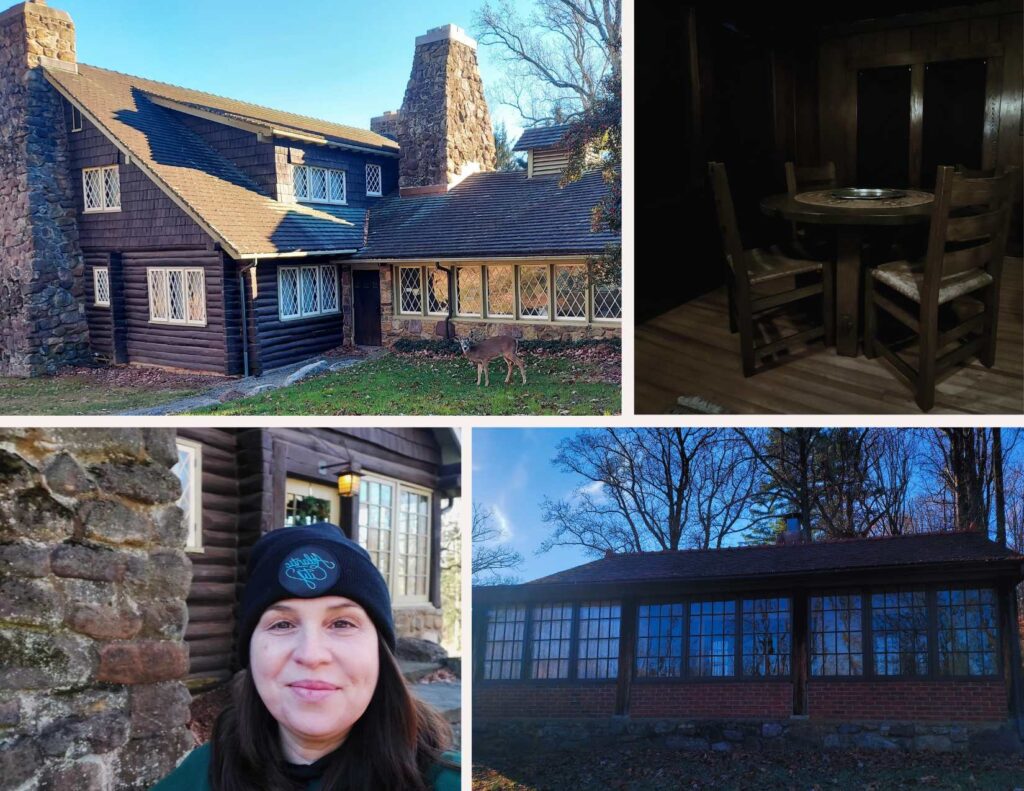
“Preservation Doesn’t Take a Holiday”: Notes from the Director’s Chair
By Vonda Givens Executive Director
Throughout 2023 the museum’s events have focused on preservation, and that focus has been primarily on major projects that are recent, ongoing, or upcoming. With the end of the year approaching, it struck me that with all of this focus on “big news” projects, we haven’t really shined a light on the day-to-day work that goes into preservation. I mentioned this to Jonathan Clancy, and in an email, he wrote in response:
I believe many people think about preservation only in terms of restoration–it’s the big, visible projects that make us aware of its importance. While preservation includes restoration, it is really the day-to-day work that we undertake that is the least-visible but most important work we do. If we are diligent in the mundane tasks of building maintenance–monitoring, inspecting, and remediating small issues–we can, through constant vigilance, avoid larger interventions down the road….
He’s right that preservation is often referenced in sweeping terms. I’m guilty of doing this, and in sweeping over the details of this work, I have inadvertently glossed over the planning and time-consuming effort that goes into it. Perhaps this is because in my job, most preservation activities fall squarely into “time-to-make-the-donuts” territory. Preservation is work. At a place like the Stickley Museum, it is routine, and making it routine is imperative. The property is better for it. Preservation is often tedious, and it is infinite—there’s always a preservation project or maintenance activity that the museum is planning to do, in the middle of doing, or finishing up. Aside from being continuous, most day-to-day preservation activities also are decidedly unglamorous.
Property checks are a good example of this kind of unglamorous routine. Property checks are undertaken daily by the staff, and every member of the museum’s staff, including Susie Traverso, our Office Manager, knows how to do one (in fact, Susie is really good at it. We can count on her to spot anything that seems amiss!). Just like it sounds, a property check is a daily buildings and grounds assessment. On a property check, we do the “monitoring, inspecting, and remediating” that Jonathan mentioned. Daily checks are recorded in a logbook, where we keep notes to share information and track problems. Property checks have helped us identify large and small issues from a hard-to-locate, underground gas leak (discovered this past year on the Saturday of July 4th weekend—perhaps the most inconvenient weekend of the year for a problem like this); to a wasp nest in the walls of the Girls’ Bedroom; to an engaged sprinkler, accidentally triggered during construction, which required pipes to be manually drained.
During the pandemic, when I was often the only staff member on-site, I routinely handled property checks. Because they can be unpredictably time-consuming, once we could all work together again, other staff members took them over (with Jonathan Clancy, as the Director of Preservation, overseeing and monitoring the lion’s share of this work), but I recently did a property check on Thanksgiving Day. Knowing that many of the staff would be returning to work on Saturday, while I enjoyed a long weekend, I scheduled myself to do this one. I could drop in for the property check, and then get back home in plenty of time for turkey.
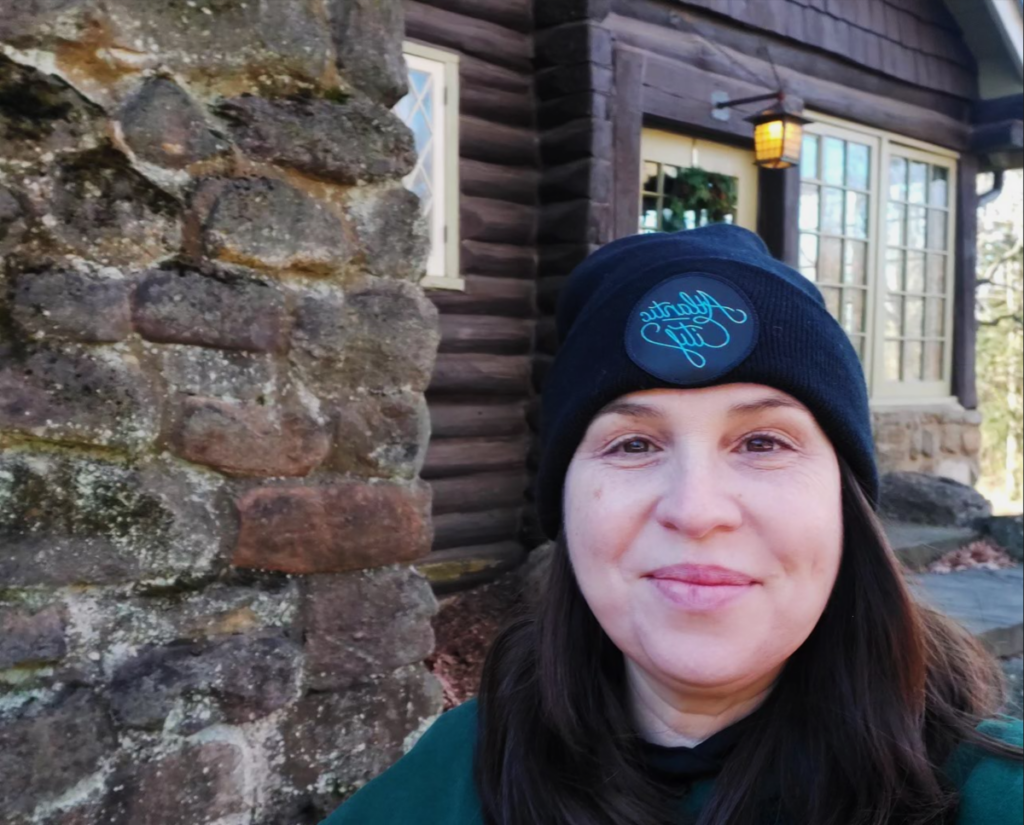
Thanksgiving Day at Craftsman Farms was cool, but sunny and beautiful, with a bright blue sky overhead (that’s my Thanksgiving Day selfie outside the Log House). I started out at the Education Center, walking through it from top to bottom, starting in the library on the upper floor, then the office on the first level, and ended at ground level, where shop coordinator Meghan Fletcher would soon set up the Crafts-Mas Pop-up Shop.
Next, I headed to the Log House, where I wanted to check out the malfunctioning spotlights that had stopped shining on the building at night (for added security and as a deterrent to vandalism). After the recent end to daylight savings time, this area was now thrown into deep darkness by 5:00 p.m. Then inside the Log House, along with all of the regular stops in a property check, I wanted to look at the Christmas decorations. New Visitor Services staff member Samuel Calabrese had undertaken this annual, gratifying but time-consuming, task of decorating the Log House for the first time. I made notes to call the electrician and to ask Samuel to load up the Christmas tree with even more decorations (to imitate Stickley-era trees, which looked much more homespun than our trees today).
As I walked around the Log House and through its festive interiors, it was peaceful and uncharacteristically bright for a November day. The next building, the North Cottage, was the opposite.
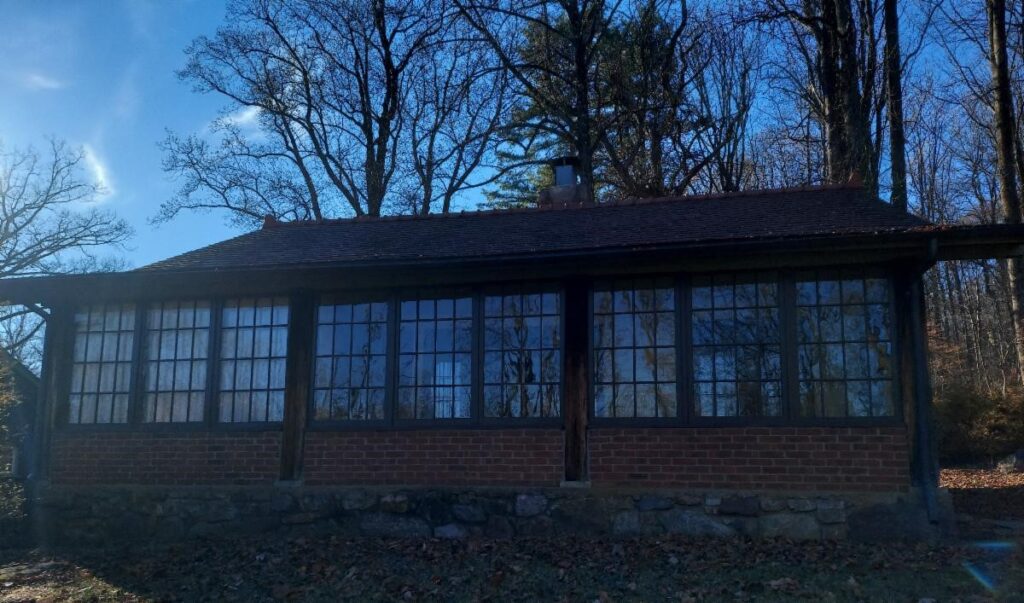
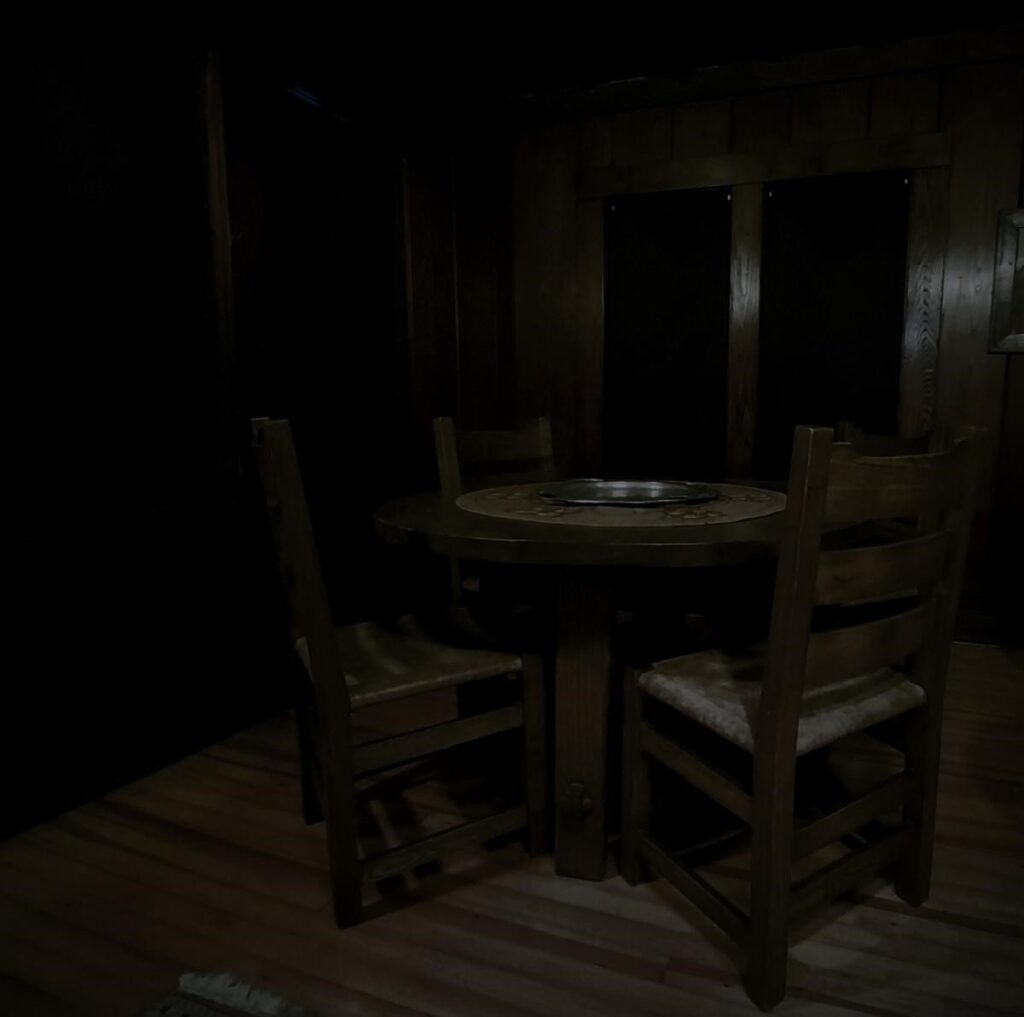
At the Cottage, I left behind the sparkling sunshine (above) and entered into its silent darkness. The restored cottage windows have UV protection, but when it is closed to the public, the windows have the added protection of blackout curtains to safeguard its rare furnishings. It was cool and cave like inside the Cottage. I flipped on the lights to do my checks, but I am always drawn to the murky mystery of the darkened Cottage (and tried to capture it in the picture at left) with its furnishings–a collection of green ash Stickley furniture–standing as silent sentinels awaiting the next wave of visitors.
After I wrapped up the property check and headed back toward the parking lot, I came upon a herd of deer, the museum’s most frequent visitors.
The herd, of around a dozen deer, seemed startled by my appearance on this otherwise quiet day, but one bold loner was on his own grazing in front of the Log House kitchen. He gazed at me with confident boredom, unbothered by my presence, even as I edged closer for a picture.
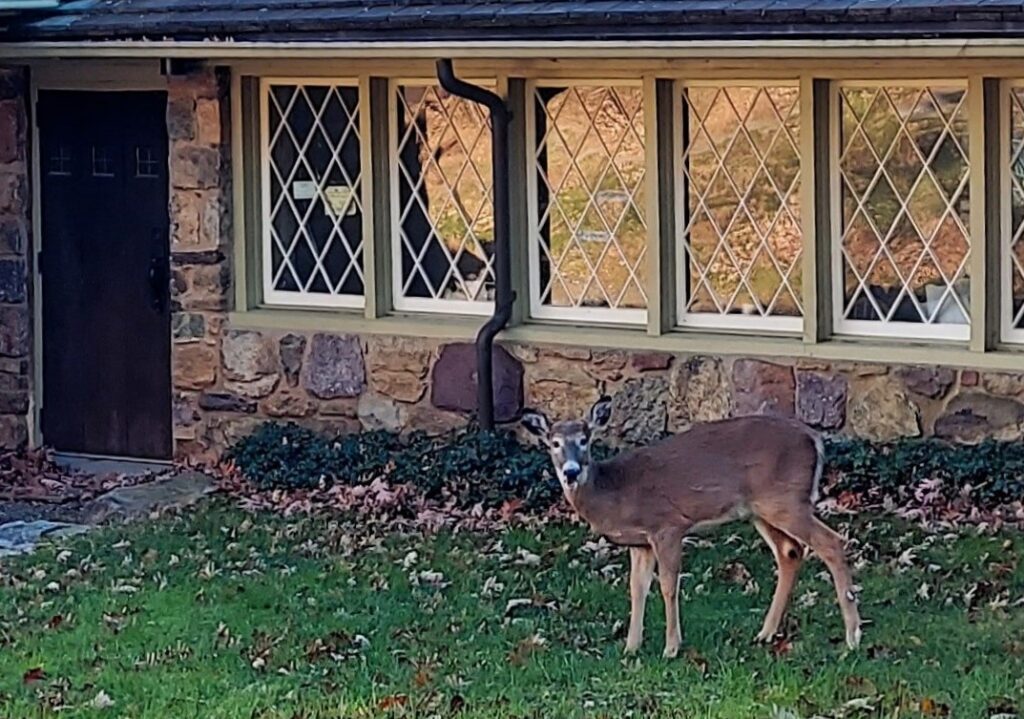
This kind of time alone at Craftsman Farms is, for me, a fringe benefit. It is a privilege to wander alone through the rooms of the Log House, to breathe in the dark silence of the North Cottage, to greet Craftsman Farms’ wildlife neighbors, but while all of this bucolic charm made my Thanksgiving property check rather lovely, not all property checks are like this. They can be exasperating. They can be distressing (like the day, shortly before the recent Log House fireplace restoration began, when Parker Sanchez, Visitor Services and Membership Manager, discovered a fireplace hood had detached and fallen to the floor. I’m sure that’s a property check she’ll never forget!). Sometimes we happen upon a problem that I feel I could have anticipated sooner. Sometimes I frustratingly find that I anticipated a problem, but we didn’t have the financial resources, manpower, or both, to address it quickly. Thankfully, most property checks are routine and uneventful, but whatever the result, they all share one thing in common: they are essential.
Because they are essential, property checks also require thought, planning, care, and proper training, and all of those require operational funding. As Jonathan noted to me in his message about our daily approach to preservation:
Although this approach is necessary for good stewards of old buildings to embrace, it puts constant pressures on both staff time and budgets, especially in smaller organizations.
It is true that preservation is demanding and that it requires a continuous use of resources, both human and financial, and it is also at the heart of our work at the Stickley Museum at Craftsman Farms. It is not just what we do, it is who we are.
This year, as we wrap up our preservation celebration at Craftsman Farms, I invite you to be part of this daily work with a gift to the year-end campaign, which supports the museum’s general operating needs. The museum is so fortunate to have a strong community dedicated to Craftsman Farms’ preservation. We thank you and we ask, as you consider end-of-year giving, to remember the Stickley Museum at Craftsman Farms. After all, this is the holiday season, but preservation doesn’t take a holiday.